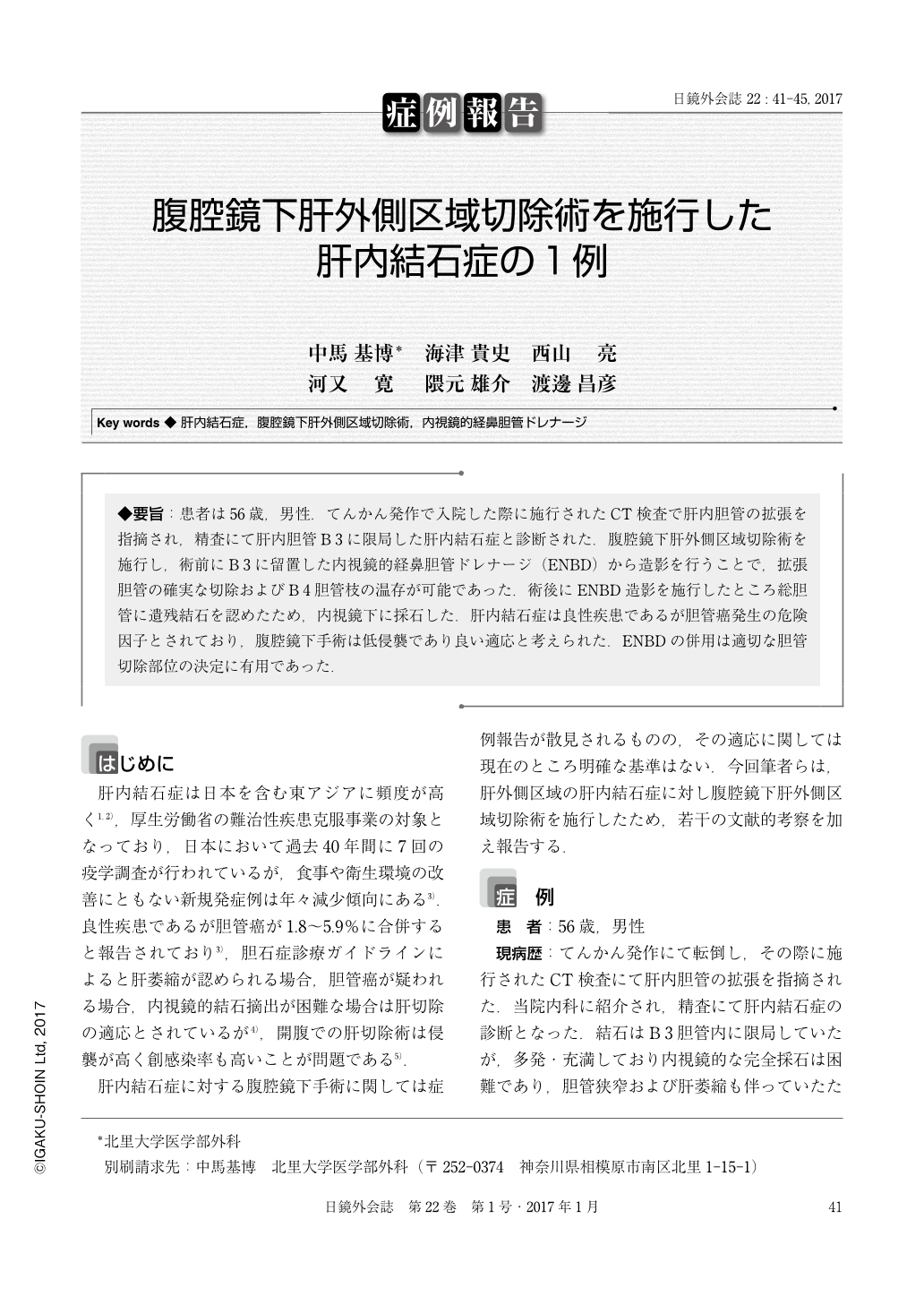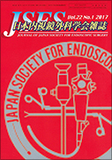Japanese
English
- 有料閲覧
- Abstract 文献概要
- 1ページ目 Look Inside
- 参考文献 Reference
◆要旨:患者は56歳,男性.てんかん発作で入院した際に施行されたCT検査で肝内胆管の拡張を指摘され,精査にて肝内胆管B3に限局した肝内結石症と診断された.腹腔鏡下肝外側区域切除術を施行し,術前にB3に留置した内視鏡的経鼻胆管ドレナージ(ENBD)から造影を行うことで,拡張胆管の確実な切除およびB4胆管枝の温存が可能であった.術後にENBD造影を施行したところ総胆管に遺残結石を認めたため,内視鏡下に採石した.肝内結石症は良性疾患であるが胆管癌発生の危険因子とされており,腹腔鏡下手術は低侵襲であり良い適応と考えられた.ENBDの併用は適切な胆管切除部位の決定に有用であった.
We report a case of a 56-year-old man, who was hospitalized with an initial diagnosis of epileptic seizure, was found to have intrahepatic bile duct dilatation by CT scan and diagnosed as having hepatolithiasis confined to the intrahepatic bile duct B3 after further examination. We performed laparoscopic lateral segmentectomy, and intraoperative cholangiography with the endoscopic nasobiliary drainage(ENBD) tube, which was placed in the B3 preoperatively, contributed to reliable resection of the dilated bile duct and the preservation of branch B4. After the operation, the remaining stone was found in the common bile duct through the cholangiography with the ENBD tube, and it was removed endoscopically. Although hepatolithiasis is a benign disease, it is identified as a risk factor of developing bile duct cancer ; therefore, the laparoscopic operation was applied since it is a minimally invasive surgery. Thus, the combined use of ENBD tube was useful to determine the appropriate bile duct resection site.

Copyright © 2017, JAPAN SOCIETY FOR ENDOSCOPIC SURGERY All rights reserved.


